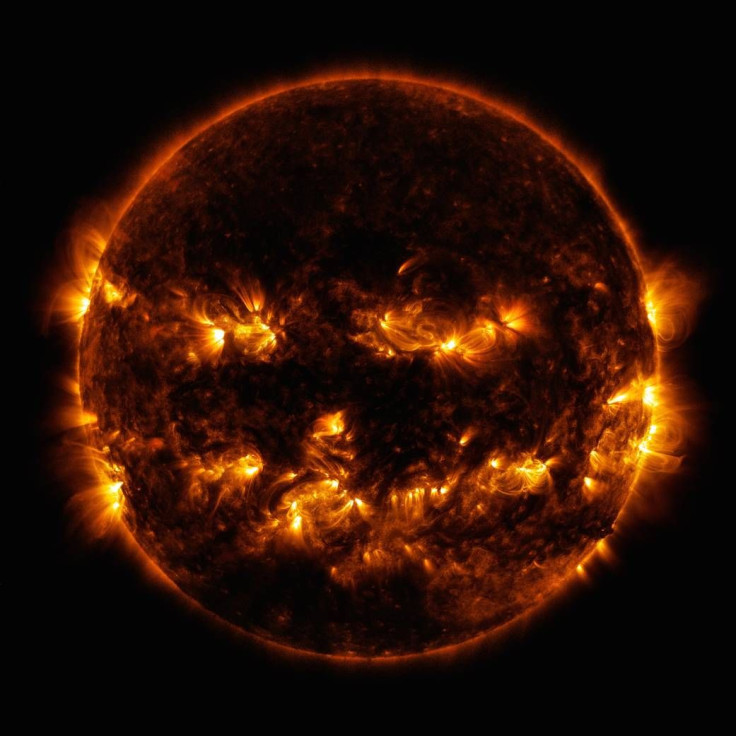NASA's Photo Of Blazing Jack-O'-Lantern Sun Is Perfect For Halloween 2019

NASA kicked off its Halloween celebrations by sharing an eerie image of the Sun that resembles a giant flaming jack-o'-lantern in space. According to the agency, the rare photo was captured by its Solar Dynamics Observatory (SDO).
The SDO satellite was officially launched by NASA in 2010 with the main mission of observing the Sun. Since its launch, the satellite has captured thousands of images of the massive star and collected valuable information regarding its activities.
On Oct. 8, 2014, the SDO captured another stunning photo of the Sun, which NASA recently shared through its Facebook page just in time for the Halloween season. In the image, the Sun appears like a giant jack-o-lantern in space.
According to the agency, the Sun’s unique appearance in the photo was caused by the various active regions on its surface. Since some of the regions emit more energy than the others, they appear brighter. The varying energy levels of the different regions create an almost eerie face on the surface of the Sun.
“The active regions in this image appear brighter because those are areas that emit more light and energy,” NASA said in a statement. “They are markers of an intense and complex set of magnetic fields hovering in the sun’s atmosphere, the corona.”
“This image blends together two sets of extreme ultraviolet wavelengths at 171 and 193 Ångströms, typically colorized in gold and yellow, to create a particularly Halloween-like appearance,” the agency added.
The jack-o-lantern Sun isn’t the only eerie image in space captured by NASA. In October last year, The Hubble Space Telescope, which NASA operates with the European Space Agency (ESA), captured a nebula in the Cassiopeia constellation about 550 light-years away.
Due to the radiation from a nearby star, the nebula’s cloud of gas and dust eroded away, which then created the cosmic object’s ghostly shape and appearance. This led the agencies to refer to the nebula as the ghost of Cassiopeia.
“About 550 light-years away in the constellation of Cassiopeia lies IC 63, a stunning and slightly eerie nebula,” the ESA said in a statement. “Also known as the ghost of Cassiopeia, IC 63 is being shaped by radiation from a nearby unpredictably variable star, Gamma Cassiopeiae, which is slowly eroding away the ghostly cloud of dust and gas.”
“This celestial ghost makes the perfect backdrop for the upcoming feast of All Hallow's Eve — better known as Halloween,” the agency added.
© Copyright IBTimes 2025. All rights reserved.





















